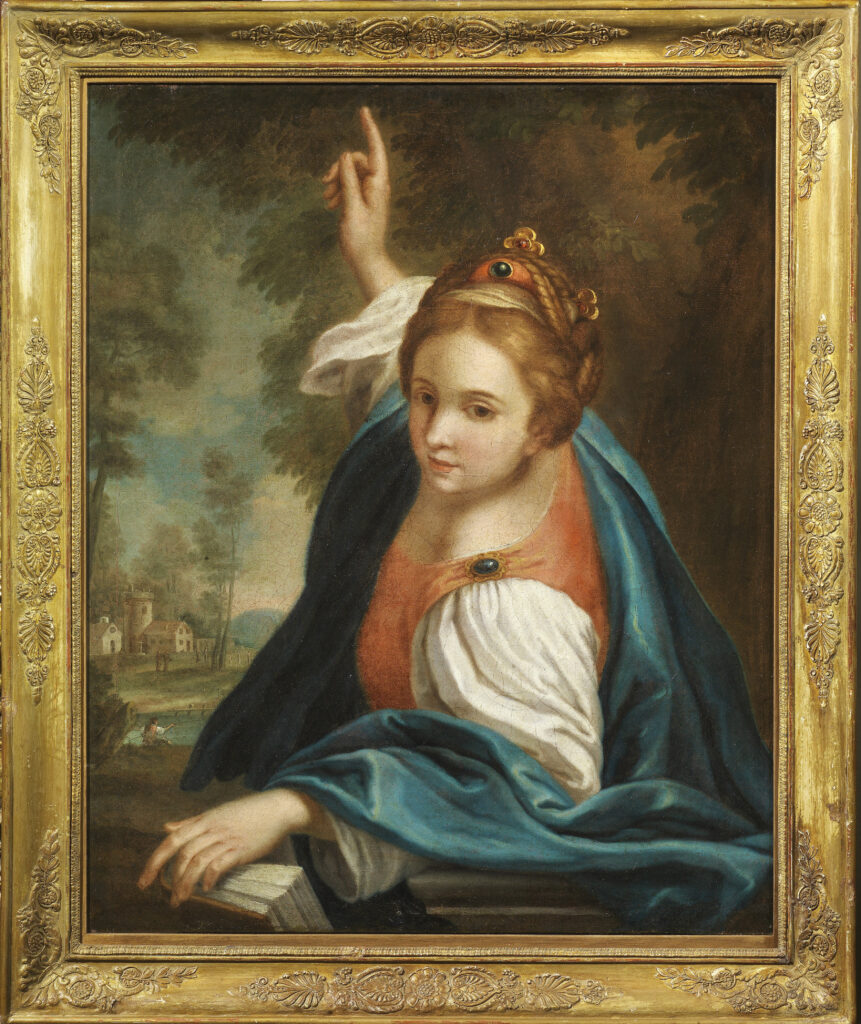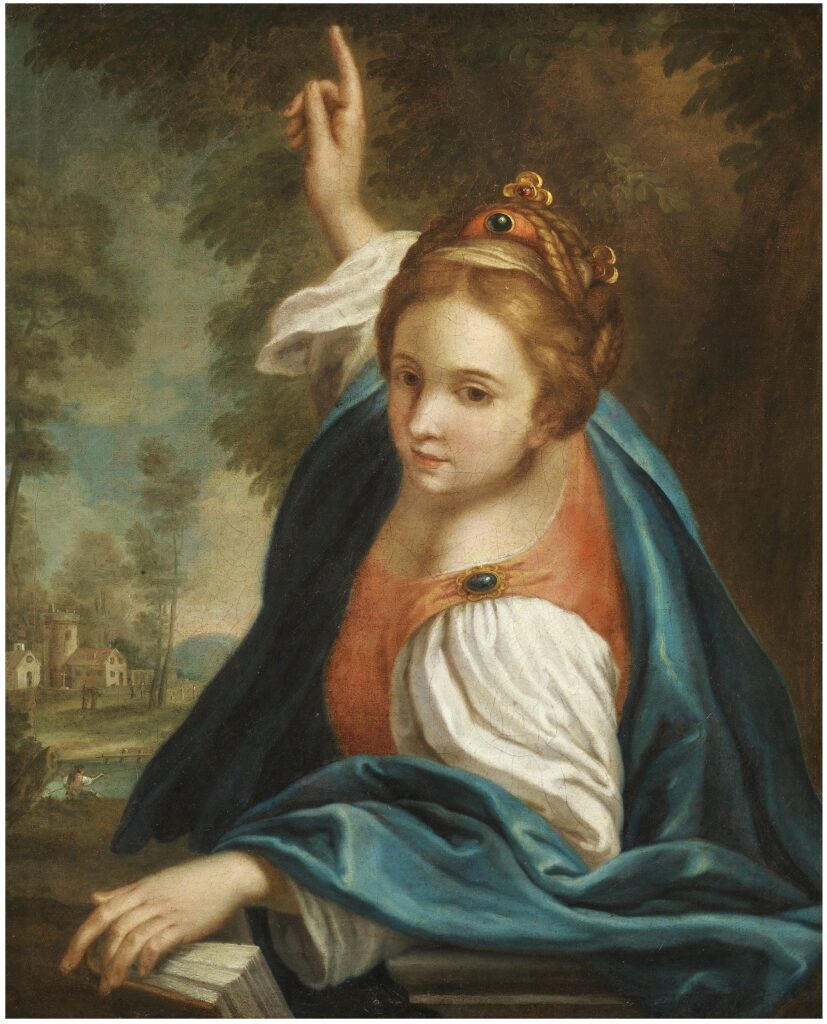ANNIBALE CARRACCI, circle of
Bologna, 1560 – Rome, 1609
Saint Margaret of Antioch
oil on canvas, cm 76×61
Saint Margaret, whose historical existence has never been attested, was born to pagan parents in Antioch of Pisidia, in Anatolia then under the rule of Diocletian, and was secretly educated in the Christian faith by the nurse to whom her father had entrusted her after the premature death of her mother. Once grown, the girl revealed her faith to her father and he drove her from home. Returning to live with her nurse, one day, while she was grazing the flock, she was noticed for her beauty by the prefect of Antioch, Olibrius, who fell in love with her and offered to marry her. Margaret rejected the proposal, declaring herself the bride of Christ, so Olibrius, also to avenge the refusal, had her first imprisoned and then tortured on the charge of being a Christian. In the darkness of the cell, one night, the devil appeared to the young woman in the form of a dragon, swallowing her, but she, armed with the cross, tore open his belly and emerged triumphant. A second devil appeared to her, but even this one failed to impress her. The following day, Olibrius, in an attempt to undermine her faith once again, had her tortured with burning torches that tore the skin of her sides, but realizing that no torment would succeed in making her deny Christ, he finally decided to behead her.
The painting we present is freely inspired by Annibale Carracci’s painting with the same subject – but full-figure – that the artist painted in 1599 for Gabriele Bombasi’s chapel in the Roman church of Santa Caterina dei Funari. The scholar, originally from Reggio Emilia, explicitly requested that the figure of the martyr be similar to that of Saint Catherine in the so-called Madonna of San Luca, painted by Annibale only a few years earlier (1592-95) for the Notaries’ chapel – of which the evangelist was patron – right in the Reggio cathedral (the work is now kept in the Louvre following the Napoleonic plunder of 1797).
The Roman painting represented a turning point in art, an overcoming of mannerism and its solemn representation, so much so that its innovative charge was perceived as soon as it was exhibited. In 1672, Pietro Bellori wrote about the event, “When the painting was placed on the altar, painters flocked to see it for its novelty, and among their various discussions, Michelangelo da Caravaggio, after stopping for a long time to look at it, turned and said, ‘I rejoice that in my time I still see a painter!'”.
Francesco Albani, a student of Carracci, addressing his pupils, said that if they wanted to learn to paint, they should run to Santa Caterina “Horsù dipingete allegramente indirizandovi a quel bellissimo colorito della Santa Margherita à S’ta Caterina de funari di mano di Annibale Carrazzi quella che il Caravaggio ci moriva sopra in riguardarla” (Go paint merrily, directing yourselves to that beautiful coloring of Saint Margaret at Santa Caterina dei Funari by the hand of Annibale Carracci, which Caravaggio was dying to look at).
Although it is a sacred subject, even a martyr, the protagonist of the canvas has nothing hieratic or pathetic about her; on the contrary, the saint is depicted in such a natural pose that she appears almost casual while, leaning on a marble pedestal, she looks straight at the viewer and points upwards with her right hand.
The success of the painting was also underlined by the burin engraving made from it by the Dutchman Cornelis Bloemaert the Younger, then reproduced in numerous prints that further contributed to conveying the fame of the painting and its revolutionary charge.


